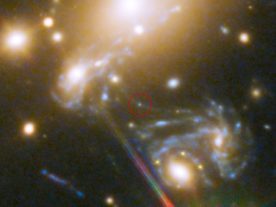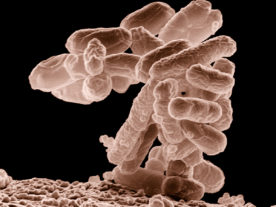The Chinese space station Tiangong 1’s recent fall to Earth, in an unguided re-entry, has raised discussion again on how to address the nagging problem of space junk or orbital debris circling our planet.

Delta 2nd Stage Stainless Steel Cylindrical Propellant Tank; landed in Georgetown, TX (NASA Orbital Debris Program Office)
The website for NASA’s Orbital Debris Program Office indicates that more than 21,000 orbital debris, larger than 10 cm, are known to be circling the Earth.
Around 500,000 particles between 1 and 10 cm in diameter and more than 100 million specks of space junk that are smaller than 1 cm are flying around in space too.
Think about it: Humankind has sent thousands of rockets into space since the launch of the first satellite, Sputnik 1, in 1957.
Governments and organizations have been trying to come up with solutions to this growing and potentially dangerous problem in space.
Could classic tools like a net and harpoon help solve the growing problem of space junk?
A SpaceX Dragon cargo ship containing supplies and several experiments was recently sent to the International Space Station.
Among the experiments included is the RemoveDEBRIS experiment which will be put into orbit by a robotic arm on the ISS.
The mission is led by the United Kingdom’s University of Surrey and the spacecraft containing the needed elements for the experiment were designed by a group of top European aerospace companies.
Once the RemoveDEBRIS satellite is in orbit, mission leaders say it will begin a series of three experiments.
First, a tiny CubeSat, (DS-1), which will serve as a test target will be put out into space.
The CubeSat will then inflate a balloon which will help test deorbiting technology and provide a larger target area.
This experiment will then fire a net at the target to see how effective it would be at capturing junk in space.
Next, after a plate that substitutes as a satellite panel is ejected from the satellite, a harpoon will be fired to see if it can snag and retrieve the flat piece of floating space junk.
The third experiment will test vision-based rendezvous navigation technology.
This test will send out a second CubeSat (DS-2) and will then use a system that includes a 2D camera along with a LiDar (Light Detection and Ranging) active imaging device.
After all the experiments are complete, the RemoveDEBRIS spacecraft will open a large drag-sail that speed-up its deorbiting process.
Once out of orbit the satellite will be sent plunging to Earth, where it will burn up as it enters the atmosphere.


























Comments are closed.